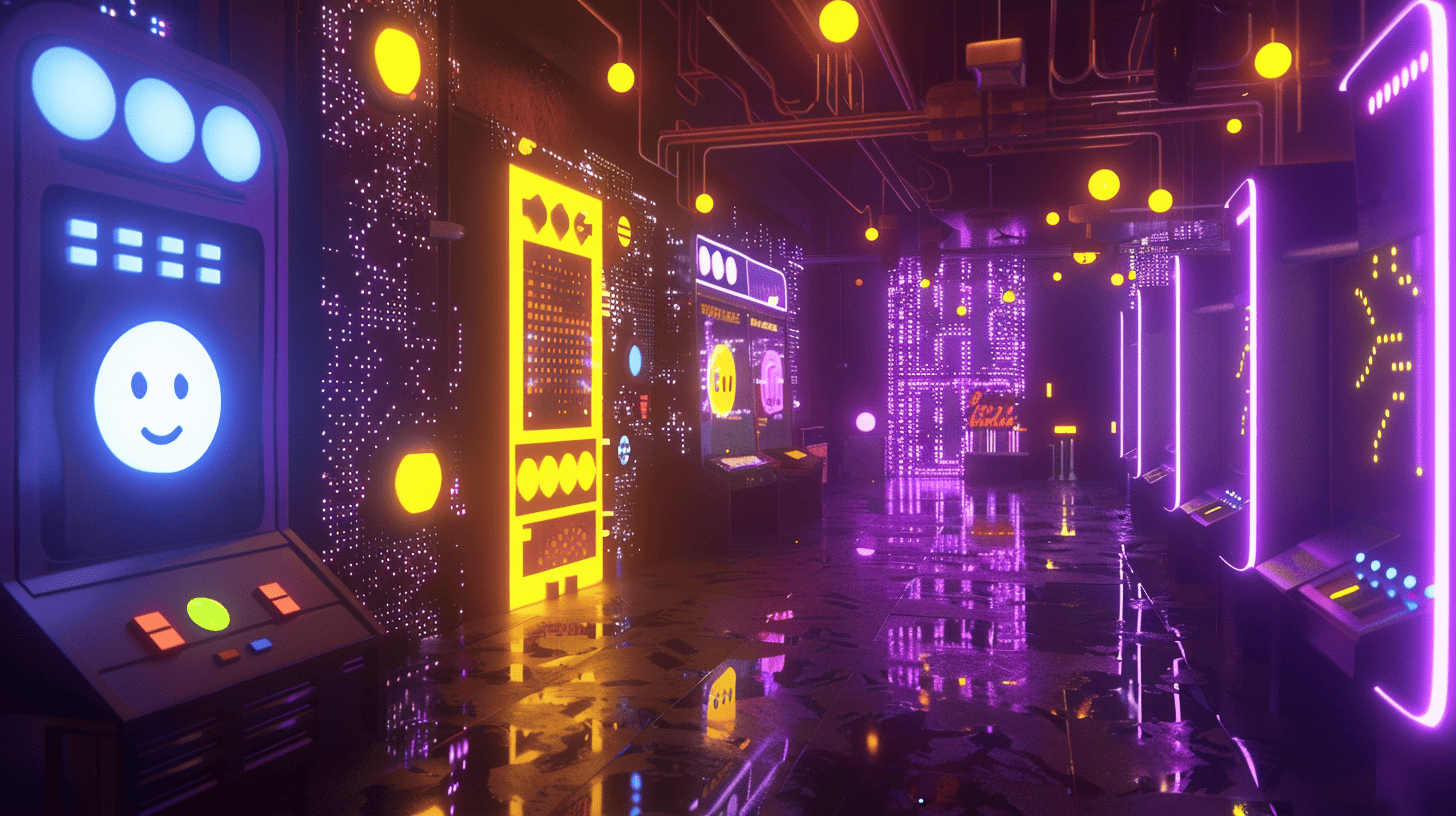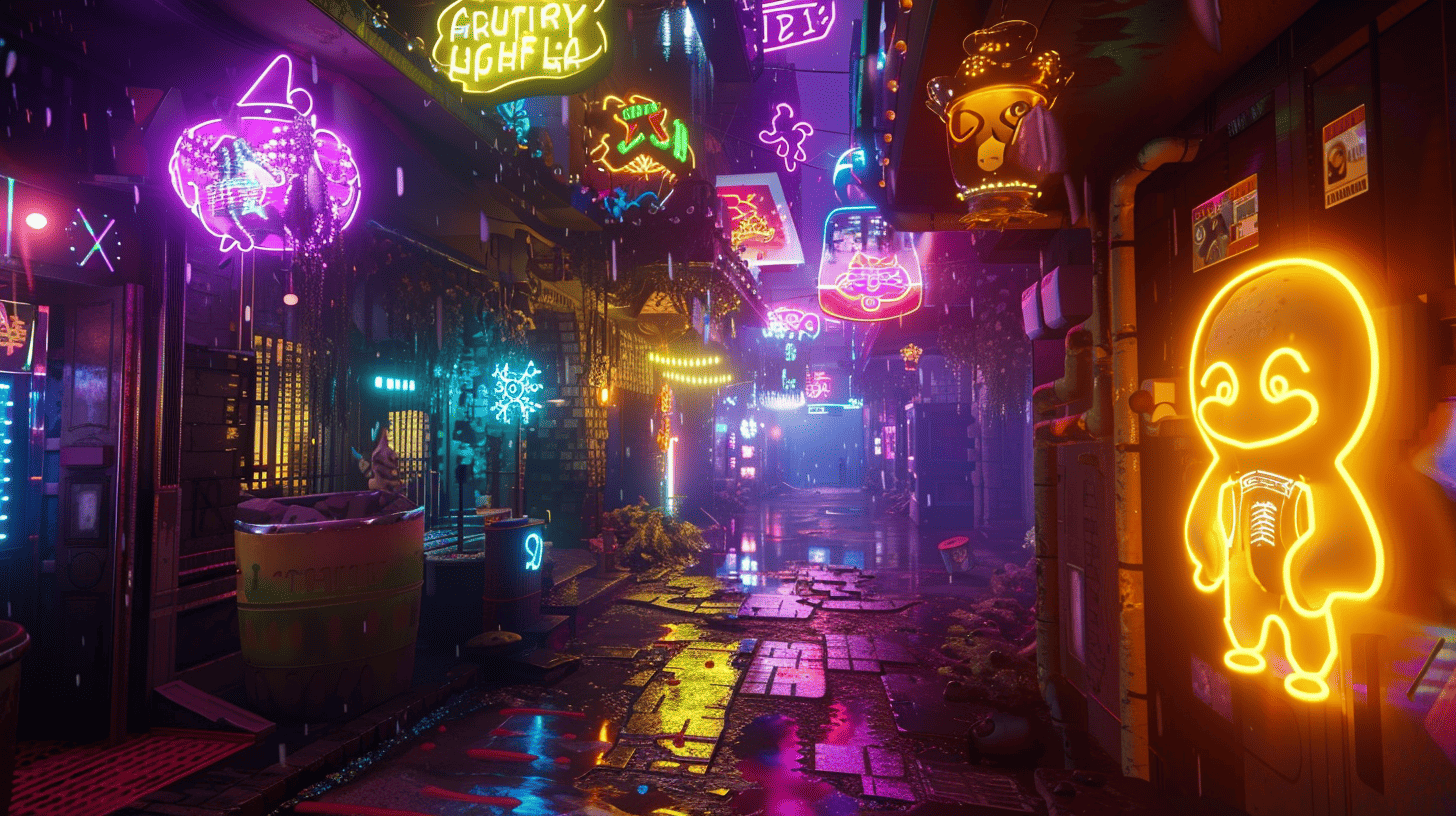The Intersection of Metaverse and Crypto Games: Creating a New Digital Frontier

The metaverse, a rapidly expanding virtual universe where users can interact, create, and transact, is reshaping the digital landscape. Its integration with crypto games is at the forefront of this transformation, combining immersive virtual worlds with blockchain technology to offer new ways of engaging with digital content. The appeal of these virtual environments lies in their ability to redefine social interactions, commerce, and entertainment, blurring the lines between the physical and digital realms.
As players explore vast, interconnected spaces and developers craft increasingly complex digital ecosystems, the fusion of the metaverse and crypto games is opening up a wealth of opportunities. This article delves into how this intersection is not only enhancing the gaming experience but also creating a new digital frontier where players and developers can thrive, unlocking unprecedented potential for innovation, ownership, and economic participation.

What is the Metaverse? Core Elements and Differences
The metaverse is a collective virtual space, created by the convergence of virtually enhanced physical reality and physically persistent virtual reality. It is a digital universe where users can interact with a computer-generated environment and other users in real time. Core components of the metaverse include persistent virtual worlds that continue to exist and evolve even when users are not actively engaged, social interaction that allows for communication and collaboration across vast distances, and user-generated content that empowers players to shape their environments, create assets, and influence the digital landscape.
Unlike traditional online gaming environments, which are typically confined to specific games or platforms, the metaverse offers a seamless and interconnected digital experience that spans across multiple virtual spaces. This ecosystem is not just about playing games; it’s about living in a virtual world where work, socialization, entertainment, and commerce all coexist. The metaverse’s emphasis on decentralization, open participation, and player-driven economies sets it apart from conventional gaming, offering a more dynamic and participatory digital existence where players are not just consumers but active contributors to the evolution of the virtual world.

The Role of Crypto in the Metaverse
Blockchain technology serves as the backbone of the metaverse, enabling secure, transparent, and decentralized experiences. By utilizing blockchain, the metaverse can support complex virtual economies where digital assets and currencies hold real-world value. Cryptocurrencies play a crucial role in these ecosystems, facilitating seamless transactions, rewarding participation, and powering in-game economies. They enable users to buy, sell, and trade virtual goods, services, and real estate, creating a thriving digital marketplace that mirrors the complexity of the real world.
Digital ownership, bolstered by non-fungible tokens (NFTs), is another cornerstone of the metaverse. NFTs allow users to own unique digital items, such as avatars, land, and collectibles, with verified scarcity and authenticity. This sense of true ownership fosters deeper engagement, as players can collect, trade, and monetize their digital assets, adding value and a personal touch to their virtual identities. Through blockchain and NFTs, the metaverse not only offers a new form of entertainment but also a viable platform for economic participation, blurring the lines between digital and physical ownership.

Integration of Crypto Games in the Metaverse
Crypto games are increasingly becoming a vital part of the metaverse, building rich ecosystems that blend gaming with economic opportunities. Titles like Axie Infinity, Decentraland, and The Sandbox are leading examples, where players can immerse themselves in virtual worlds that are not just for play but also for earning. These games leverage the play-to-earn model, where users gain financial rewards for their in-game actions, such as completing quests, battling opponents, or trading virtual assets. This model has significantly boosted player engagement, as the prospect of earning real-world value adds a new layer of motivation and commitment.
The integration of crypto games within the metaverse enhances the overall experience by introducing elements of gamification and rewards that go beyond traditional gameplay. Players can earn tokens, NFTs, and other digital assets that not only enhance their in-game performance but also have tangible value outside of the game. This dynamic creates a self-sustaining economy within the metaverse, where players are incentivized to participate, create, and collaborate. By blending entertainment with financial incentives, crypto games are transforming the metaverse into a vibrant digital society where fun and profit coexist, driving deeper engagement and a sense of belonging among users.

Opportunities for Players and Developers
The fusion of crypto games and the metaverse opens up a wide array of monetization and earning opportunities for both players and developers. For players, the metaverse offers new ways to earn through gameplay, such as trading NFTs, participating in virtual real estate markets, and engaging in play-to-earn models. This not only transforms gaming from a leisure activity into a potential income stream but also allows players to build real-world wealth from their virtual achievements. The metaverse’s decentralized nature empowers players to truly own their digital assets, giving them the freedom to sell, trade, or leverage these assets in multiple ways across different platforms.
For developers, the metaverse presents a vast playground for creativity and innovation. The emphasis on user-generated content and player-driven economies means that developers can build platforms where players are not just consumers but also creators. This can lead to the flourishing of virtual marketplaces, where players can design, sell, and profit from their creations, from custom avatars to in-game items and beyond. Additionally, developers have the opportunity to craft immersive, interconnected experiences that span multiple virtual worlds, offering seamless interactions and collaborations across different games and platforms. By embracing the metaverse, developers can tap into a rapidly growing market, redefine the boundaries of digital engagement, and contribute to the evolution of a new digital frontier.

Challenges and Considerations
While the integration of crypto games within the metaverse presents exciting opportunities, it also brings a set of challenges that must be addressed to ensure sustainable growth. One of the primary technical hurdles is scalability. As more users and transactions populate the metaverse, maintaining the performance and responsiveness of these virtual worlds becomes increasingly complex. Interoperability between different blockchain networks and gaming platforms is also a critical issue, as seamless cross-platform interactions are essential for a cohesive metaverse experience. Additionally, developers face the challenge of maintaining decentralized infrastructures that can support the vast, interconnected ecosystems of the metaverse.
Security is another major concern in the metaverse. With digital assets like NFTs and cryptocurrencies holding significant real-world value, the risk of hacking, fraud, and other malicious activities is heightened. Safeguarding these assets requires robust security measures, including advanced encryption, secure wallet solutions, and vigilant monitoring of virtual environments. Ensuring the safety of users’ investments and data is paramount to maintaining trust and engagement in these digital spaces.
The regulatory landscape also poses challenges for the metaverse and crypto gaming. As these technologies blur the lines between virtual and real-world economies, questions around legal compliance, taxation, and consumer protection arise. Developers and users must navigate a complex web of regulations that vary widely by region, adding an additional layer of complexity to the growth and operation of metaverse platforms. Balancing innovation with regulatory compliance will be key to fostering a safe and inclusive metaverse that benefits all participants.

The Future of the Metaverse and Crypto Games
The intersection of the metaverse and crypto games is poised to redefine digital experiences, offering limitless possibilities for players, developers, and the broader digital economy. As metaverse environments continue to evolve, we can expect to see even deeper integration of crypto gaming elements, where blockchain technology and virtual worlds merge seamlessly. This evolution will likely be driven by advancements in VR and AR technologies, which will enhance the immersive qualities of the metaverse, making these virtual spaces even more engaging and interactive. With the rise of accessible VR headsets and AR devices, the metaverse could become a fully realized digital universe where users can experience games, social interactions, and economic activities in new and exciting ways.
Community-driven governance and Decentralized Autonomous Organizations (DAOs) are also expected to play a pivotal role in shaping the future of these digital worlds. By empowering users with decision-making authority, DAOs can facilitate more democratic and transparent development processes, ensuring that the metaverse evolves in line with the desires and needs of its participants. This shift towards community-led management could lead to more inclusive and responsive virtual environments, where players have a genuine stake in the direction of the platforms they inhabit.
As we look to the future, the combination of the metaverse and crypto games stands at the forefront of a new digital frontier. The integration of blockchain technology offers not only enhanced gameplay but also real-world economic opportunities, transforming how we interact with virtual worlds. The potential for these technologies to revolutionize entertainment, commerce, and social interaction is vast, setting the stage for a dynamic and interconnected digital landscape. For players and developers alike, this convergence promises a future of innovation, creativity, and endless possibilities, as we move towards a world where virtual and real-life experiences are seamlessly intertwined.
